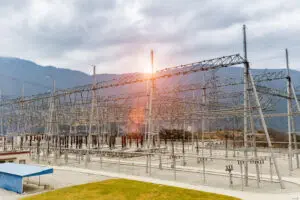 Lack of investment in the country’s transmission grids has become a huge roadblock to clean energy and reliable power. Will 2023 be the year things start to change?
Lack of investment in the country’s transmission grids has become a huge roadblock to clean energy and reliable power. Will 2023 be the year things start to change?
The grid may be the weakest link in the chain connecting the U.S. to a clean energy future.
Strengthening it to support the decarbonization of the country’s electricity system will take hundreds of billions of dollars of new investment, according to multiple studies. But money alone won’t be enough. It will also require a rapid evolution of the regulatory structures that determine how high-voltage transmission lines get built. Tricky regulatory issues include how to site the lines without running roughshod over landowner rights or harming the environment, how to speed up the construction process, and how to determine who should cover the costs.
That’s a highly complex and contentious set of challenges to take on. But the past year has offered more evidence that the grid we have today simply isn’t capable of doing what needs to be done. It’s not reliable enough to protect Americans from the rising threats of climate-change-induced extreme weather. It’s also not robust enough to support the massive growth in clean energy needed to combat climate change.
At least 2022 didn’t see any grid disasters on the scale of the one that left millions of Texans without power during Winter Storm Uri in February 2021. But both Texas and California were forced to take emergency action to prevent heat-wave-driven grid imbalances this summer, and grid regulators warned that summer and winter shortfalls could force utilities and grid operators to impose rolling blackouts across broad swaths of the country.
This worsening reliability situation is the result of rapidly changing conditions on both the supply and the demand side of the grid-balancing equation.
On the demand side, more frequent weather extremes of heat and cold are driving unprecedented demand for electricity to cool and heat homes, while the push to electrify transportation and building heating will add major new draws on the grid.
On the supply side, drought is sapping hydroelectric supplies and cooling capacity for thermal power plants. Hurricanes and floods are weakening aged grid infrastructure. Fossil-gas shortages threaten to leave some regions without adequate fuel for the gas-fired power plants that provide the marginal power to keep the grid running when other resources run short. Meanwhile, nearly half the country’s coal-fired power plants have been shuttered over the last decade — some due to climate-change mandates, but many more because coal increasingly can’t compete against cheaper alternatives.
There’s an enormous amount of solar and wind power under development across the country that could help make up for those losses. A growing share of this capacity under development includes batteries that can be used to store and shift that variable clean energy to when grids need it the most.
Leave a Reply